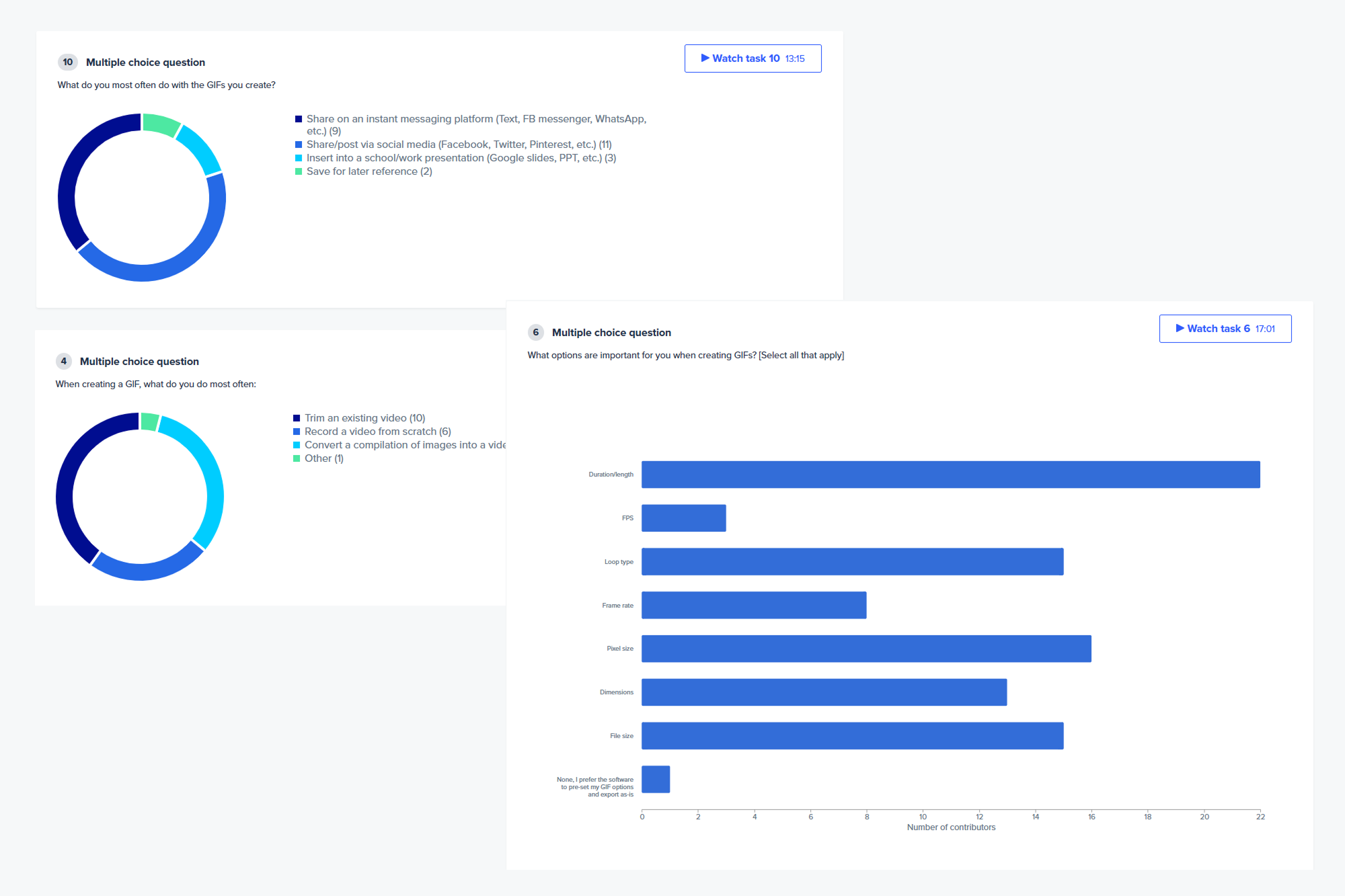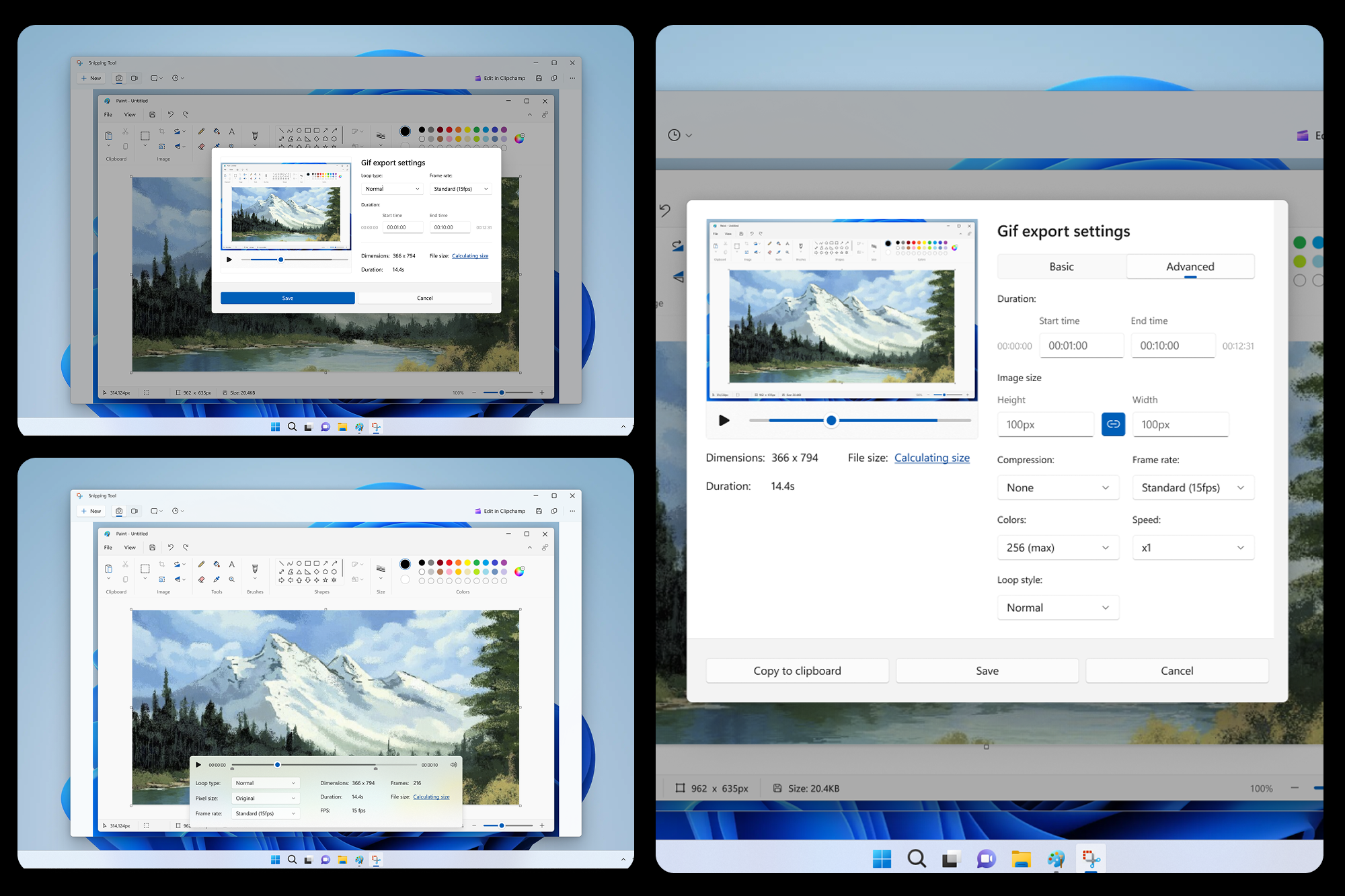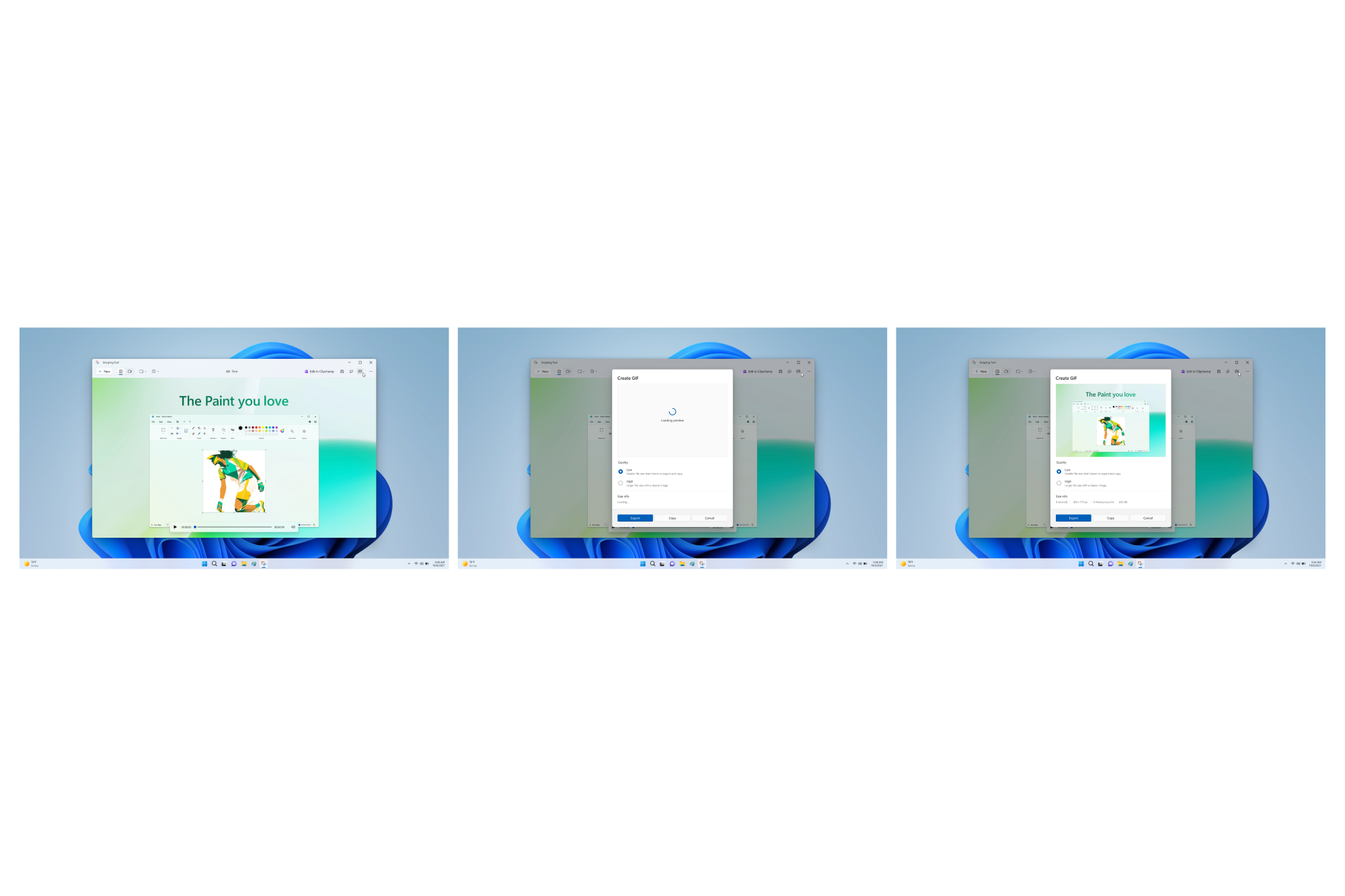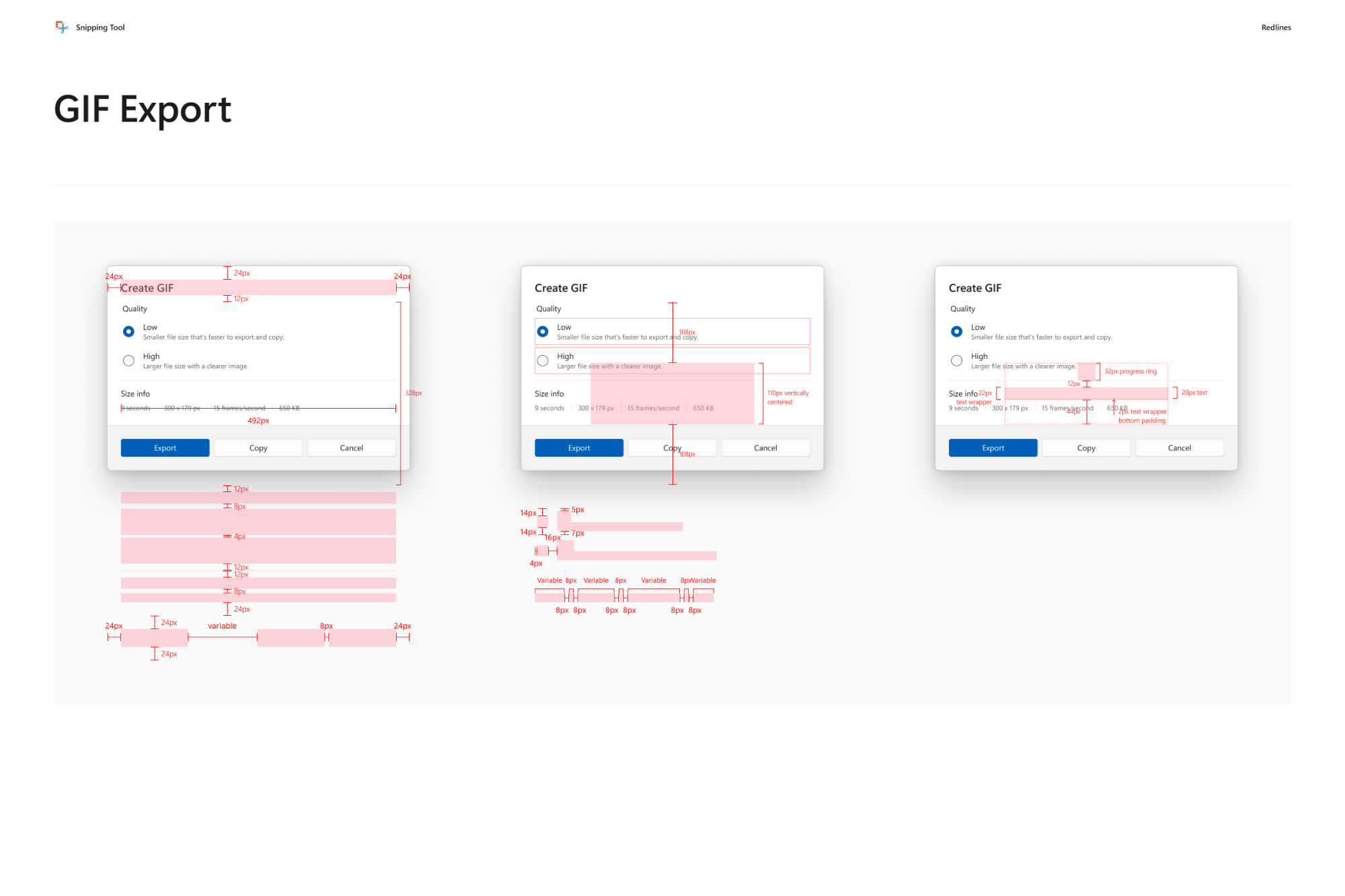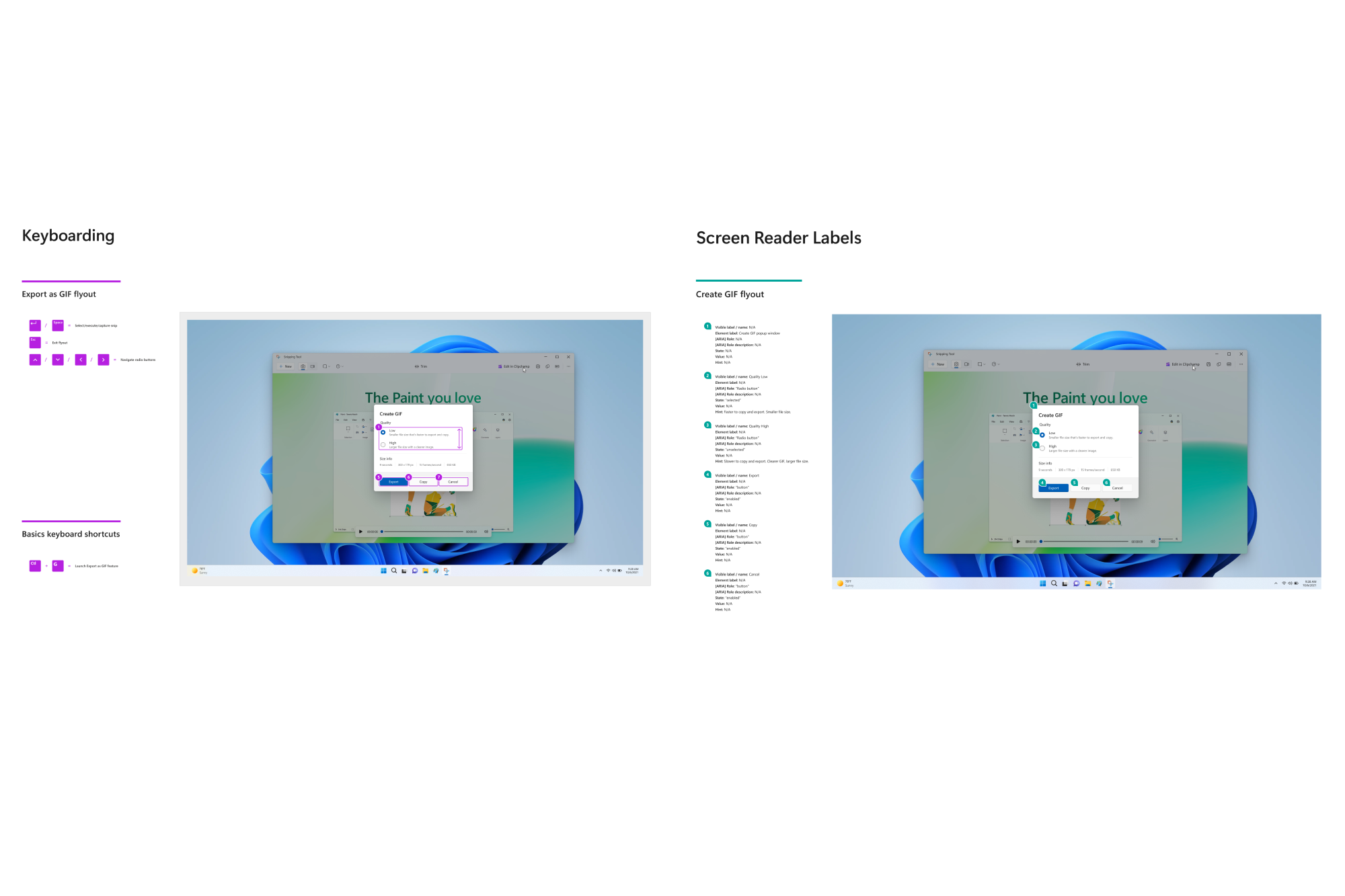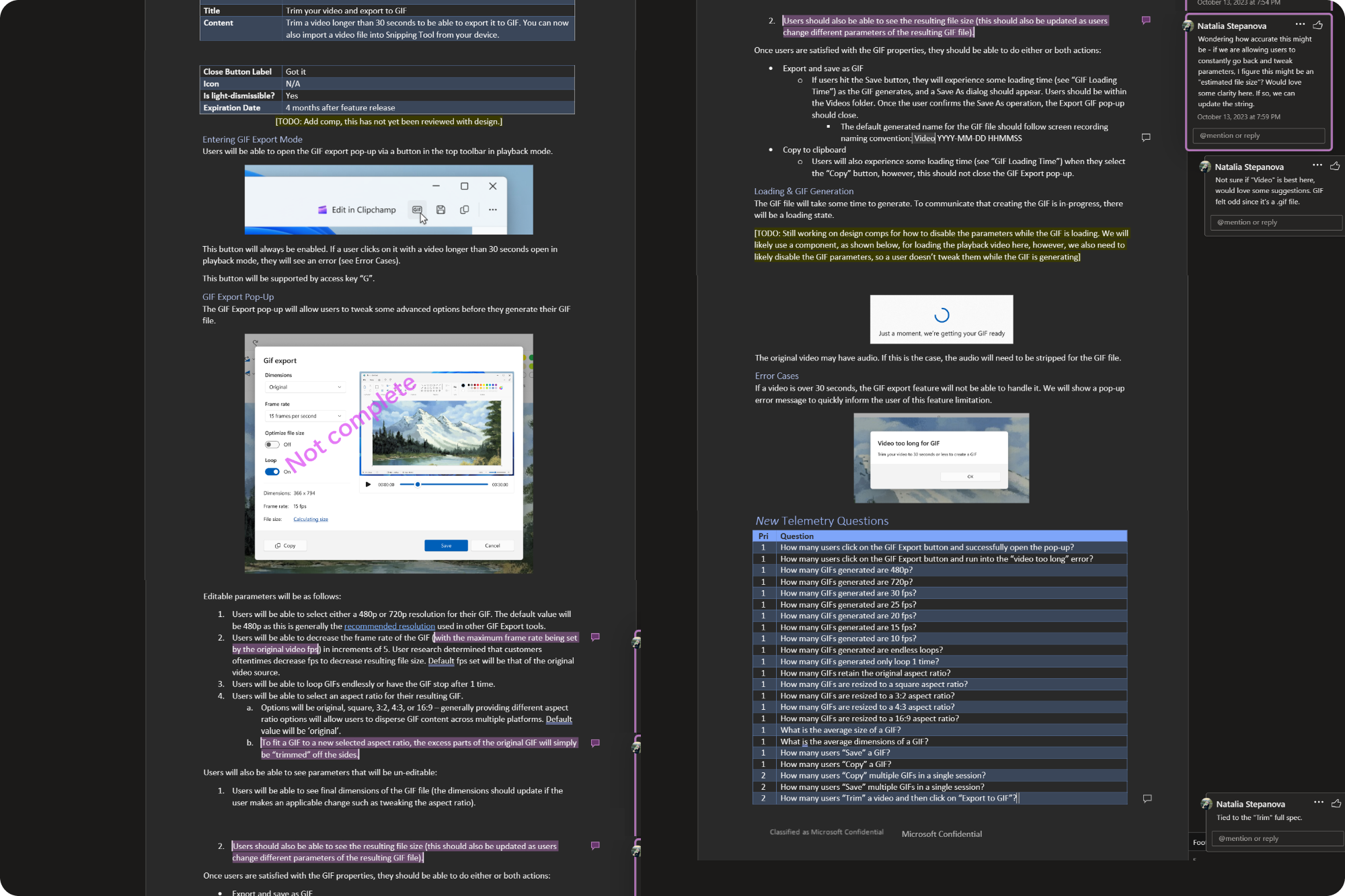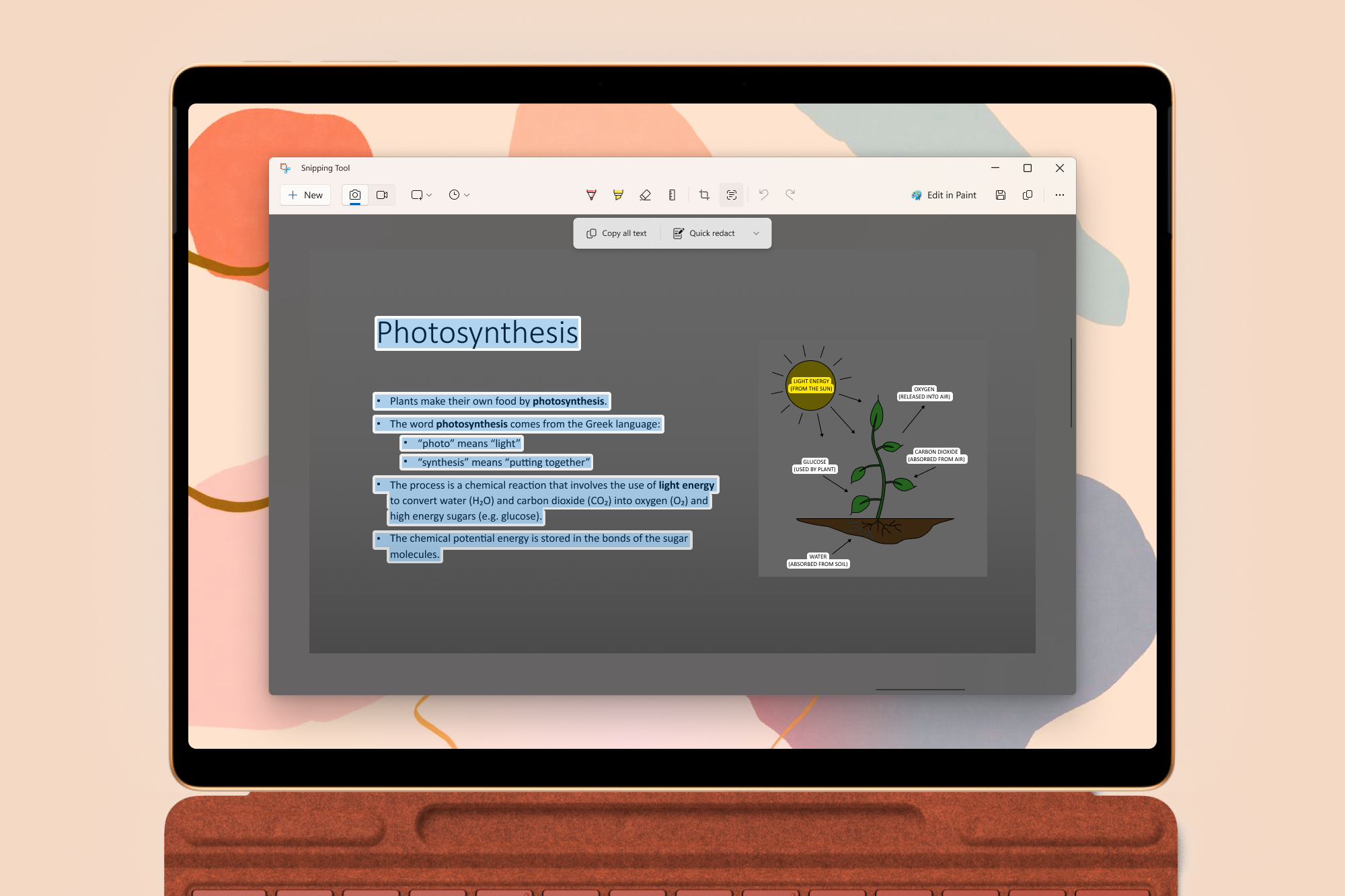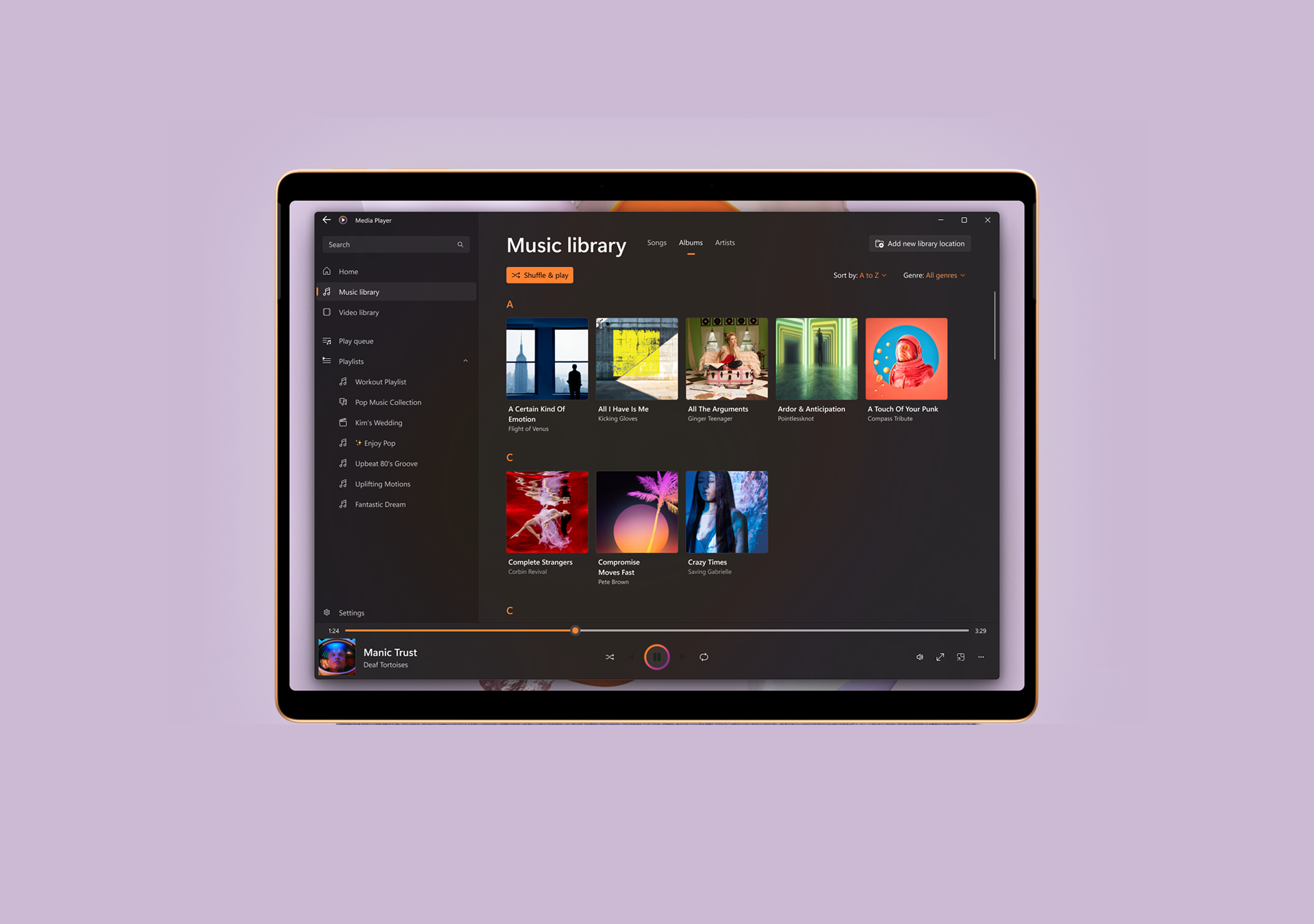GIFs are widely used across many social media platforms with GIPHY being used as one of the top online
databases and search engines for animated GIF files. GIPHY serves "10+ billion pieces of GIPHY content
to a daily user reach of 1+ billion people,"_ to provide users a powerful and animated way to express
themselves online. Empowering Snipping Tool users to export short videos as GIFs gives them another
way to express themselves online and allows them to explore a new layer of creativity in having power
to make their own GIFs right on Windows.
Users have additionally requested GIF export via Feedback Hub shortly after Screen Recorder's release
(87 upvotes):
• "Now that Snipping Tool supports recording video in Windows 11, it should let me save as gif"
• "Snipping Tool Screen Recording —Add save as GIF!"
Introducing a GIF Export feature could increase user engagement and retention by empowering users to
do more with video recordings.
Definition of Success
Engagement:
% (Feature MAD) / (Screen recording MAD) = 15%
Success means that 15% of Snipping Tool screen recorder users have used the GIF export
feature at least once in the previous 28 days.
Looking at PM-led user research, about 30% of participants (out of 50) record videos from scratch
before importing into a GIF export tool. Through research, only a handful of participants listed Snipping
Tool as their primary video capture tool. This may be since Snipping Tool does not yet support GIF
export, so as a goal, it would be a success to capture half of that usage after releasing this feature.


